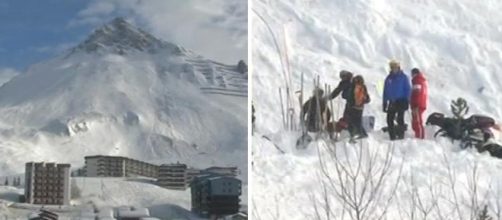it is confirmed that several skiers have been swept away by the avalanche at 9am, GMT, on Tuesday, but it does appear that no one was killed or injured.
The near disaster happened at in the Val Claret region of the vast Ski Resort of Tignes close to the relative safety of a blue slope which is considered only moderately difficult.
at 10:06 local time the deadly wall of ice crossed the popular piste, Carline.
Rescue personnel and police have evacuated the slopes and closed the entire resort for fear of a second emergency.
Bad weather is slowed the search
The fog made it impossible to use helicopters and rescuers from outside the resort had to come in by road instead.
On Tuesday the avalanche risk was very high and stood at level 4 on a scale of 5
The news comes just over two weeks since the last avalanche in Tignes where sadly four people were killed.
Since the open of the ski season, 14 such incidents have been reported and seven people have died.
In January, 29 people were killed after snow buried the Hotel Rigopiano in Italy, which was caused by an earthquake.
With all the snow falling across the alps, more avalanches are expected and emergency services will stay on high alert.
Last season 45 incidents were reported and 21 people died
An avalanche is very complex and unpredictable with many variables.
Experts decide on the risk of an event each day, sometimes closing sections of resorts while warning skiers of the risk.
While every effort is made to try and avoid a disaster happening, every year the mountains claim more lives as people go in search of the white adrenaline fueled fun on the slopes.
Avalanches usually occur during winter or spring, when snowfall is at it's highest. Spring is especially dangerous as the sun may melt the top layer of snow and during the night it freezes and creates a sheet of smooth ice. If more snow falls on top of the ice sheet, it is a recipe for disaster.
However, there are still many more causes which are very unpredictable. Earthquakes, animals, people and even loud noises have all been known to cause avalanches.

